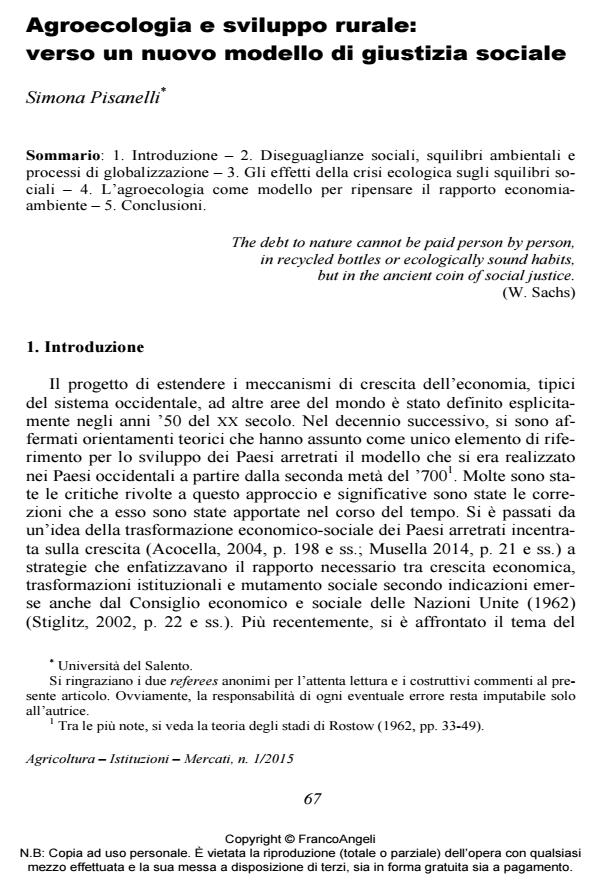Agroecology and Rural Development: Towards a New Model of Social Justice
Journal title AGRICOLTURA ISTITUZIONI MERCATI
Author/s Simona Pisanelli
Publishing Year 2017 Issue 2015/1
Language Italian Pages 20 P. 67-86 File size 221 KB
DOI 10.3280/AIM2015-001004
DOI is like a bar code for intellectual property: to have more infomation
click here
Below, you can see the article first page
If you want to buy this article in PDF format, you can do it, following the instructions to buy download credits

FrancoAngeli is member of Publishers International Linking Association, Inc (PILA), a not-for-profit association which run the CrossRef service enabling links to and from online scholarly content.
A decade ago, Amartya Sen expressed his surprise at the economists’ lack of interest in environmental questions. Today the situation remains unchanged, because social scientists continue to consider the environment as a marginal issue in theories of development and social change. The article focuses on agroecology as a pathway towards a possible alternative to the traditional development pattern. In the first part, the author shows that economic growth, based on market automatisms, has guaranteed neither an overall material improvement nor a satisfactory equilibrium in terms of social equity. The second part focuses on the need to define a new development theory, aimed at renewing the relationship between human beings and the environment. Finally, in the last part, the author focuses on agroecology as an innovative approach, which can re-define the analytical framework of rural development as regards the following aspects: the connection between humankind and nature, the relationships between producers and consumers, and the link between farmers and scientific research.
Keywords: Agroecology, Rural development, Social justice, Equity.
Simona Pisanelli, Agroecologia e sviluppo rurale: verso un nuovo modello di giustizia sociale in "AGRICOLTURA ISTITUZIONI MERCATI " 1/2015, pp 67-86, DOI: 10.3280/AIM2015-001004